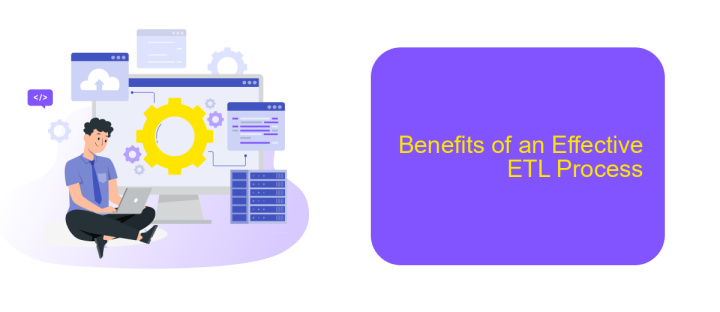ETL Stands for What in Data Warehousing
In the realm of data warehousing, ETL stands for Extract, Transform, Load. This critical process involves extracting data from various sources, transforming it to fit operational needs, and loading it into a data warehouse. ETL is essential for consolidating data, ensuring its quality, and making it accessible for analysis and decision-making. Understanding ETL is fundamental for effective data management.
ETL: A Vital Component of Data Warehousing
ETL, which stands for Extract, Transform, Load, is a crucial process in data warehousing. It ensures that data from various sources is collected, cleansed, and stored in a centralized data warehouse, making it readily available for analysis and reporting.
- Extract: Data is retrieved from multiple heterogeneous sources such as databases, CRM systems, and flat files.
- Transform: The extracted data is then cleansed, filtered, and transformed into a suitable format or structure for querying and analysis.
- Load: Finally, the transformed data is loaded into the data warehouse for long-term storage and access.
Efficient ETL processes are vital for maintaining data integrity and consistency. Services like ApiX-Drive can simplify the integration of various data sources, automating the extraction and loading processes. This allows organizations to focus on data transformation and analysis, ultimately leading to more informed decision-making.
What Does ETL Stand For?

ETL stands for Extract, Transform, Load, which are the three fundamental processes involved in data warehousing. Extraction involves retrieving raw data from various sources, such as databases, APIs, or flat files. This data is often diverse and unstructured, requiring careful handling to ensure it is accurately captured. The transformation phase involves converting the extracted data into a format suitable for analysis. This may include cleaning, aggregating, and enriching the data to ensure consistency and usability. Finally, the loading phase involves transferring the transformed data into a data warehouse or another target system for further analysis and reporting.
Effective ETL processes are crucial for maintaining data integrity and enabling robust data analytics. Modern tools and services, such as ApiX-Drive, can significantly streamline these processes by automating data integration tasks. ApiX-Drive offers a user-friendly platform that allows businesses to set up data pipelines with minimal technical expertise. By leveraging such services, organizations can ensure their data is accurate, timely, and ready for analysis, ultimately supporting better decision-making and strategic planning.
Understanding the Three Phases of ETL

ETL stands for Extract, Transform, Load, which are the three critical phases in data warehousing. Each phase plays a pivotal role in ensuring the data is accurately and efficiently processed for analysis and reporting.
- Extract: This phase involves retrieving data from various sources such as databases, APIs, and flat files. The goal is to collect all relevant data while minimizing the impact on the source systems. Tools like ApiX-Drive can simplify this process by automating data extraction from multiple sources.
- Transform: During this phase, the extracted data is cleaned, enriched, and transformed into a suitable format for analysis. This may involve filtering out duplicates, converting data types, and applying business rules. ApiX-Drive can assist in transforming data by providing customizable workflows and integration capabilities.
- Load: The final phase involves loading the transformed data into the target data warehouse or data mart. This step ensures that the data is stored in a structured manner, ready for querying and analysis. Efficient loading mechanisms are crucial to maintain data integrity and performance.
Understanding these three phases is essential for anyone involved in data warehousing. Leveraging tools like ApiX-Drive can streamline the ETL process, making it more efficient and less prone to errors.
Benefits of an Effective ETL Process

An effective ETL (Extract, Transform, Load) process is crucial for the seamless operation of data warehousing. It ensures that data is accurately extracted from various sources, transformed into a usable format, and loaded into the data warehouse efficiently. This process enables organizations to make data-driven decisions with confidence.
One of the primary benefits of an effective ETL process is the improvement in data quality. By cleansing and validating data during the transformation phase, businesses can eliminate inconsistencies and errors. Additionally, ETL processes can automate data integration tasks, reducing the time and effort required for manual data handling.
- Enhanced data accuracy and consistency
- Time-saving through automation
- Improved decision-making capabilities
- Scalability to handle large data volumes
Furthermore, services like ApiX-Drive can streamline the ETL process by offering easy-to-use integration tools. These tools allow businesses to connect various data sources without extensive coding knowledge, making the ETL process more accessible and efficient. By leveraging such services, organizations can focus on analyzing data rather than managing complex integrations.
Conclusion
In conclusion, ETL (Extract, Transform, Load) is a fundamental process in data warehousing that ensures data is accurately and efficiently moved from multiple sources to a central repository. This process not only enhances the quality and accessibility of data but also supports robust data analysis and reporting. By extracting data from diverse sources, transforming it to meet business requirements, and loading it into a data warehouse, organizations can achieve a comprehensive view of their operations and make more informed decisions.
Moreover, modern tools and services like ApiX-Drive simplify the integration of various data sources, making the ETL process more streamlined and efficient. ApiX-Drive offers automated workflows that can connect different applications and systems without the need for extensive coding, thus reducing the complexity of data integration. By leveraging such services, businesses can focus on deriving insights from their data rather than getting bogged down by technical challenges. Ultimately, a well-implemented ETL process is crucial for unlocking the full potential of data warehousing.
FAQ
What does ETL stand for in data warehousing?
Why is ETL important in data warehousing?
What are the main stages of the ETL process?
Can ETL processes be automated?
What are the challenges of implementing ETL processes?
Do you want to achieve your goals in business, career and life faster and better? Do it with ApiX-Drive – a tool that will remove a significant part of the routine from workflows and free up additional time to achieve your goals. Test the capabilities of Apix-Drive for free – see for yourself the effectiveness of the tool.

